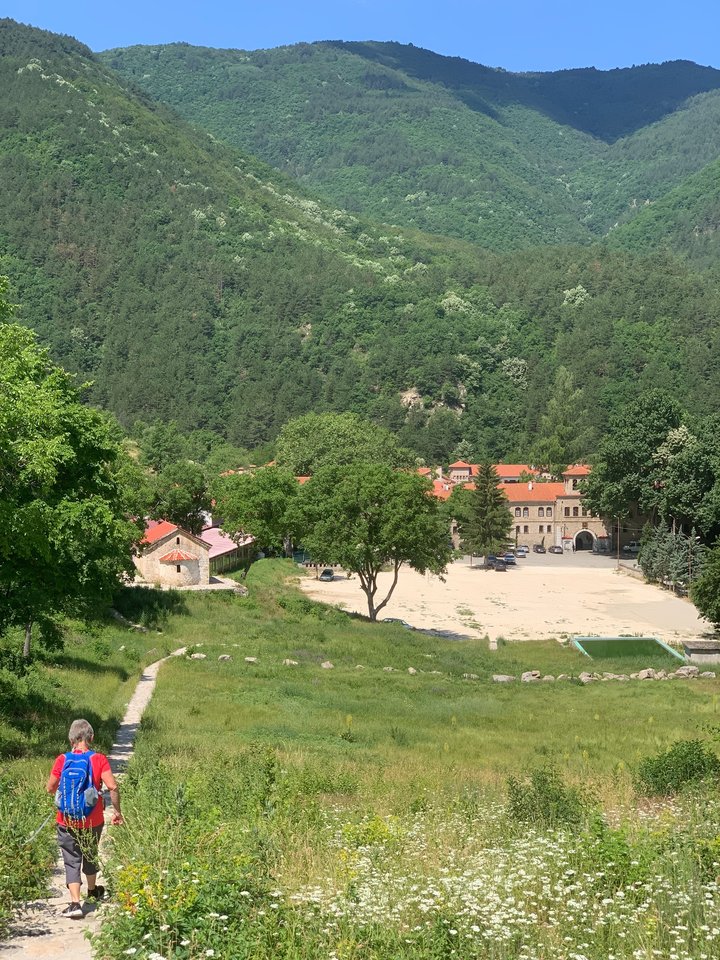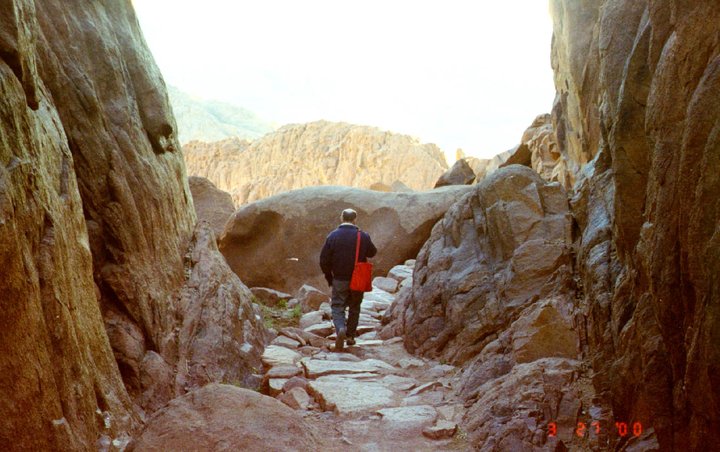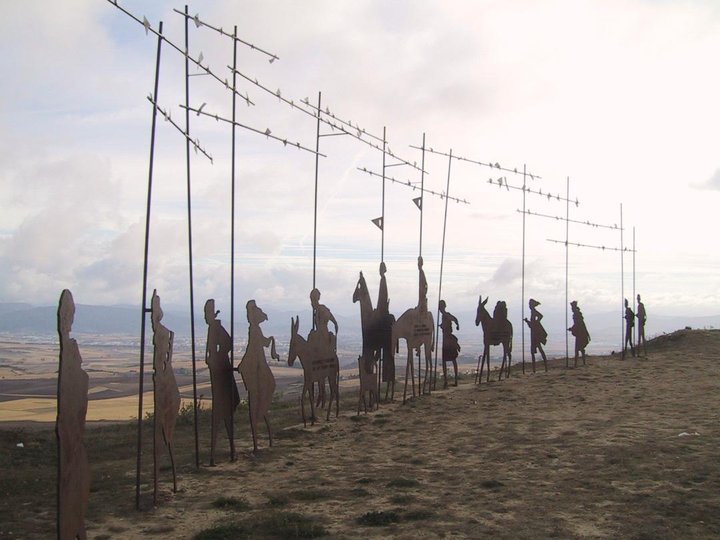“I, the often-mentioned Sebastos Gregory…the very sinful (until now) longed to build a very beautiful church and round it a dwelling for monks and in it a burial place for the repose of my sinful bones…it was not completed with any other money belonging to someone else nor as a result of any wrongdoing nor even with forced labor…”
— Gregory, founder of Bachkovo monastery, AD 1083
###
Bachkova orthodox monastery, in the hills south of Plovdiv, Bulgaria (Barry Evans)
Main church, Bachkova monastery (Barry Evans)
Doing serious penance for one’s sins isn’t exactly in vogue these days, but in medieval Europe, making amends for sins was part and parcel of Life. (You’re not a sinner, you say? Sorry laddie/lass, check out Original Sin: you were born one!) Not everyone can aspire to same heights of penance as Sebastos Gregory, but some really try. Five hundred years previously, a monk from the Monastery of St. Catherine, in the heart of Egypt’s Sinai Desert, made the “Steps of Repentance” his life’s work. The steps are a staircase from the monastery to the top of adjacent Mount Sinai, a total of 3,750 stone steps. It took him 50 years, and was “in repentance of a sin he committed.” We neither know the monk’s name, nor (more pruriently) what his sin was.
Heading down the 3,750 Steps of Repentance (Barry Evans)
If monastery-building or staircase-construction wasn’t your thing, you could always turn to a professional to handle your amends. Six hundred years ago, William Chaucer parodied such a worthy, in the Tale of the Pardoner, one of his many rollicking and bawdy Canterbury Tales. The Pardoner charges folks to absolve them from their sins, making a good living in the process — he boasts of fleecing the rubes to the tune of a hundred pounds a year. His schtick is admirably simple: he has a Holy Mitten, and if you put it on your hand, your sins will be forgiven and your crops will be abundant:
He
that his hand wol putte in this mitayn,
He
shal have multipliyng of his greyn…
Unless, that is, the one asking for absolution “hath doon synne horrible,” in which case they need more than a mitten to obtain redemption.
Chaucer’s magnum opus is set in the Tabard Inn in Southwark, London, where a hodgepodge group of pilgrims overnights en route to the shrine of Thomas à Beckett in Canterbury Cathedral, Kent. And the whole point of a pilgrimage is to do penance in order to resolve your guilt, jealousy, spite or malice, preferably suffering en route.
That was the original idea, anyway. When Louisa and I walked the Camino de Santiago — 540 miles, 30 days, a million steps — across northern Spain some years ago, I don’t think we had any particular sins in mind to atone for. Some of our fellow perigrinos did though, they told us, while others were doing the peregrination to honor of the death of a loved one, or they needed to take a complete break from their day-to-day lives after a divorce or other traumatic event: to reboot their brains, as it were.
A reminder, on the Camino de Santiago, of the millions of pilgrims who traveled the same path for over a thousand years. (Barry Evans)
All of us, whatever our virtue-vice quotient, suffered from blisters. And all of us heard the same refrain, repeated as a mantra on the trail: Tus ampollas son tus pecados. Your blisters are your sins.
Thank God for moleskin.
(More pics from Bulgaria on my FB page.)




CLICK TO MANAGE